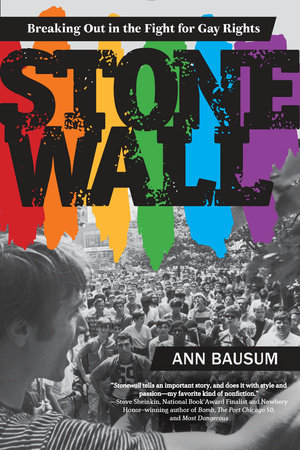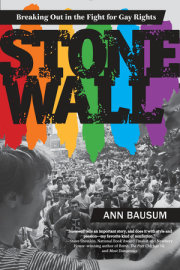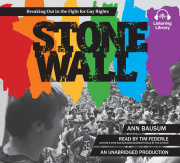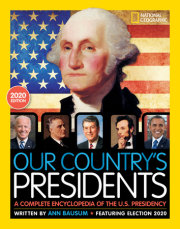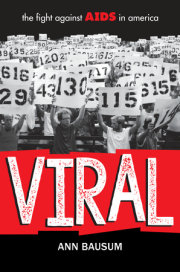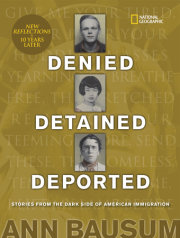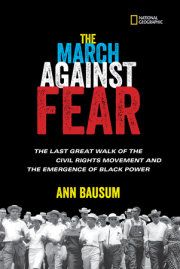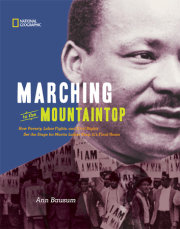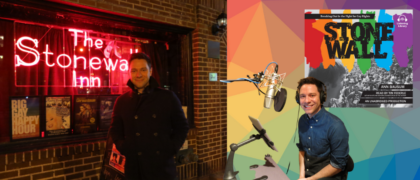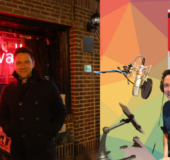Cover: Marty Robinson (left) addresses a rally commemorating the Stonewall riots, July 27, 1969. “We’ve got to stand up,” he urged. “This is our chance.”
Members of the Gay Activists Alliance help form a human chain across the George Washington Bridge between New York and New Jersey to demonstrate their support for gay rights, May 6, 1973.
East Village rambler, New York City, November 12, 1967.
The façade of the Stonewall Inn (still marked by the graffiti of recent events), September 1969. Unrest three months earlier converted this spot in Greenwich Village into ground zero for gay rights history.
“The door of the Stonewall had wrought-iron bars across this little peephole, a little wooden thing that slid open. And the man inside would look at you and, if you looked like you belonged there, would let you in.”
—CHRIS BABICK,
describing the entrance to the Stonewall Inn
FOR STARTERS, THERE WAS A FULL MOON. AND IT WAS beastly hot. Plus it was Friday night in New York City. A party night. A night to hit the bars, dance, and hang out with friends, even if the friends were gay. Especially if the friends were gay.
In the summer of 1969, the Stonewall Inn served as a space for gays to meet, dance together, and express their physical attractions. It provided a showplace for cross-dressers to camp it up in their finery. It was a spot to hang out with other people who understood what it felt like to be gay on the cutting edge of changing times.
On the street gays kept alert, wary of police officers in uniform and mindful that the next attractive stranger posing as a homosexual might in fact be an imposter packing a police badge. Every state except Illinois carried sodomy laws that prohibited nonvaginal sexual intercourse, chiefly directed at gay men. People caught defying these laws—especially in public but even at home—could expect to land in jail and receive verbal abuse, or worse, on the way.
In the workplace gays lived on edge, too. With the exception of a few careers, such as theater work, most gays had to mask their sexual identities or risk being fired. It was perfectly legal to dismiss someone from a job because of perceived sexual deviance, and then homosexuality topped the list of so-called abnormal behavior. Federal employees, including armed service members, faced automatic discharge if they failed to conceal their sexual orientations. Prospects for employment elsewhere, and even for finding housing, became grim. “Why they don’t just round us all up and kill us I don’t know,” lamented one discredited military veteran.
At home gays might not find much refuge, either. Most young gay men and lesbians felt compelled to live with the secret of being different. Perhaps they faced rejection, even being disowned, for admitting their attraction to same-sex partners. These youths often left home, either by choice or by order of disapproving parents, and they headed to urban centers in search of companionship and a hint of tolerance. Older gay men and lesbians might marry people of the opposite gender, either in an attempt to combat their same-sex urges or because they sought the legitimizing shelter of marriage, but peace of mind could rarely be found in such relationships.
Whether on the street, at work, or at home, gays confronted the reality that acting on their sexual orientations constituted illegal behavior. Any portrayal of homosexuality in the media tended to reinforce these negative stereotypes. After all, such actions ran counter to the teachings of organized religion. A homosexual life was a sinful life, many clergy members preached. Anyone living openly as a homosexual could expect eternal damnation in the afterlife and was unlikely to be welcomed to worship.
Meanwhile, the medical community condemned homosexuals as mentally ill. To overcome thoughts and behaviors judged to be deviant, doctors advised intensive talk therapy, even electroshock treatment. Some gay men were castrated against their will, a procedure that removed their testicles and deadened the sex drive. Others were lobotomized, a medical practice that destroyed the connections between the frontal lobes and the thalamus of the brain, deadening just about all aspects of behavior.
Gays who settled in such urban centers as New York City and San Francisco knew that the best place to find understanding and camaraderie was with other gays. In New York City, the southwestern neighborhood of Manhattan known as Greenwich Village served as a magnet for many gay men and lesbians. Its reputation pulled gay runaways and adults alike to a city where many found the closest thing that could pass for a safe community.
Gay bars served as natural places to meet in such neighborhoods, and, as hangouts went, these establishments felt relatively safe. No one performed lobotomies there, and no one condemned the patrons as sinners. If gays were lucky, no one arrested them either. For all the plusses, during the 1960s gay bars in New York City came with plenty of negatives. Many were run by the organized crime syndicate of the Mafia. Bouncers might refuse to let patrons enter. Overpriced drinks featured watered-down alcohol to boost profits. Sanitary practices might be nonexistent, from the bar counters to the bathrooms. Police routinely raided the bars, both to enforce laws that prohibited various aspects of homosexual behavior and to reinforce a system of payoffs by Mafia owners to corrupt police officers. But something was better than nothing, so gays who wanted to socialize flocked to the bars that sheltered them from public scrutiny and offered them the comfort of camaraderie.
The Stonewall Inn (which was a bar only, not a hotel, despite its name) had a rough-and-tumble character from the time it opened in 1967. It stood on Christopher Street, a vibrant east-west corridor that cut through the heart of the West Village. Its building had housed everything from a stable to a French bakery to a tearoom to a burned-out restaurant before it debuted as a gay bar.
Bouncers at the Stonewall literally screened patrons by peering through a vertical slit in the door. The three-dollar price of weekend admission included two free drinks, albeit ones of suspect cleanliness and integrity. (Weekday admission cost one dollar.) The grungy bathrooms drew use only from patrons in desperate need of a toilet. Its bars didn’t even have sinks to wash dirty glasses. The whole place had a subterranean, primitive feel. Barricaded windows. Black walls. Minimal furnishing. Dark. Smelly, with whiffs of cologne and perfume and body odor wafting off of patrons. And, like all bars then, a film of cigarette smoke clouding the air.
None of that mattered, though, because the Stonewall Inn had something not always found at gay bars: music. Plenty of music, and twin dance floors. Few bars in New York, even gay bars, permitted same-sex dancing, but the Stonewall’s dance floors were open to all. Patrons dropped coins into the jukeboxes and lost themselves in the beat of a popular song, the crush of bodies on the dance floor, and the freedom of physical interaction between same-sex couples. For many of the patrons, the Stonewall offered one of those rare places where they felt like they belonged.
The late 1960s pushed all sorts of social boundaries in the United States, especially for young people. A vibrant youth subculture arose, and its followers experimented with illegal drugs, fed the development of popular music, protested an unpopular war in Vietnam, and embraced, literally, the sexual freedoms fueled by the whole scene. Thousands of young people had frolicked in San Francisco during 1967 in what was dubbed the Summer of Love. Gays were as interested in the grand experiment as straight people, and the Stonewall Inn offered the homosexual equivalent to many heterosexual hangouts. Rich with grunge. Loose in spirit. Full of bodies, a relentless drumbeat, and abundant alcohol.
A participant in the Summer of Love in San Francisco, June 21, 1967. The Stonewall Inn had opened as a gay bar just months earlier. Two years later, thanks in part to the countercultural influence of events such as the Summer of Love, the Stonewall would explode with activism.
Who went to the Stonewall? Representatives of the full spectrum of gay expression. Closeted males with respectable jobs and reputations seeking a discreet way to express their same-sex preferences. Married men acting on their desires to be physically involved with other men. Runaway youths, drawn by New York’s gay scene, who hung together on the streets of Manhattan and partied together at the Stonewall. Artists, performers, and intellectuals who lived openly as gays. A few straight friends of gays.
In 1969 the legal drinking age in New York was eighteen, so plenty of the young people who frequented the Stonewall either were legal or could pass for it. Most Stonewall patrons were in their teens and twenties. Few were over forty. Men constituted the vast majority of patrons at the Stonewall, but lesbians visited it sometimes, too. So did men who proudly called themselves queens, adopting feminine mannerisms and, on occasion, wearing women’s clothing. Such individuals were labeled transvestites or cross-dressers during an era before the existence of the more inclusive and broader term transgender. Cross-dressing males might strap on padded bras, don wigs, slip on party dresses, and hit the town.
“It was the best place we ever had.”
—DICK KANON, describing the Stonewall Inn in 1969
Time passed in three-minute intervals at the Stonewall, give or take a few seconds. Cue “Satisfaction” by the Rolling Stones (3 minutes, 44 seconds). Maybe Diana Ross and the Supremes sang “Stop! In the Name of Love” (2 minutes, 52 seconds). Or the Beach Boys harmonized on “I Get Around” (2 minutes, 12 seconds). Song by song, dance by dance, the evening spun away.
Visitors split their time between the bar’s two main rooms. The front room, adjacent to Christopher Street, drew the older and more conventional customers. This space housed the main bar plus side tables. A dance floor dominated the room, driven by a jukebox stocked with pop tunes. Ten cents bought one song; a quarter paid for three. Dancers weaved in and out of spotlight beams, performing for the crowd. Men danced with men, often for the first time in their lives. By 1969, a pair of scantily clad go-go boys had added their professional moves to the dance beat from within the set of matching cages that bookended the bar.
The Stonewall’s back room held a dance floor, too. In fact, the dance floor served as the main feature of the back room, although the space did have its own small bar and limited perimeter seating. This room drew the younger patrons, perhaps in part because the back room’s jukebox offered a playlist of raw blues, Motown hits, and gutsy soul music that addressed conflicts relevant to their youthful lives. The greatest ethnic and visual diversity appeared in the back room, too, with African Americans, Puerto Ricans, and whites, some in drag, mixing into an exotic canopy of free expression.
On June 27, 1969, the Stonewall Inn pulsed to the beat of the music, pulsed to the beat of hundreds of hearts, pulsed to the beat of the final year in a tumultuous decade. “There was a generally up mood in the place,” one chronicler later recalled. An up mood “as friends who hadn’t seen one another for at least twenty-four hours were reunited in deeply felt embrace, as newfound lovers exchanged meaningful kisses on the dance floor or across a table, while others sipped their drinks waiting for Prince Valiant to come.”
Waiting and dancing. Waiting and dreaming. Waiting.
An up mood. A hot night. A full moon hanging outside. The pulse of changing times. Times when anything could happen. Midnight. Twelve thirty. One twenty a.m.
And then the overhead lights came alive. Dancers froze in the brightness as the jukeboxes ceased to blast the night’s beat. Person by person, awareness dawned through the fog of smoke and sweat and booze.
R-a-i-d.
RAID.
Early gay rights activists Randy Wicker and Barbara Gittings participate in an Independence Day protest for gay rights in Philadelphia, 1966.
“When you left bars you always had to stiffen up and look straighter and try to be always on your guard. Just walking with my friends down the street from one bar to another was a heavy thing.”
—PERRY BRASS,
recollecting the gay bar scene in New York City during the 1960s
CRAIG RODWELL WASN’T AT THE STONEWALL INN DURING the raid on that hot night in June 1969, but he could have been. Rodwell had arrived in New York City a decade earlier, one of countless displaced young men drawn to Greenwich Village. Initially he had visited the clubs and hangouts popular with the city’s gay community. By 1969, though, at age twenty-eight, he had become an outspoken critic of the gay bars in Greenwich Village—or at least the Mafia-run gay bars, which pretty much meant all the gay bars in the area.
Being outspoken had become one of Rodwell’s trademarks. His outspokenness had gotten him arrested and jailed in 1962 after he objected to police harassment over his wearing a skimpy swimsuit popular with gays. His outspokenness had put him on protest lines since 1965 in support of fair treatment for homosexuals. And his outspokenness had led him in 1967 to found the Oscar Wilde Memorial Bookshop, the nation’s first bookstore devoted to gay literature.
Craig Rodwell at Riis Park beach in New York City, circa 1961.
Rodwell had arrived in New York to become a ballet dancer. Instead he’d become a radical. In between he’d tried to find his fit in the world as a gay man. Many of his early experiences took him out on the streets of New York City. In the late 1950s and early 1960s he’d run with a crowd of other gay teens. He and his friends wore the era’s signature fashion for rebellious youths: blue jeans. For Rodwell’s crowd, the tighter the jeans the better. “We couldn’t have them tight enough. Literally. We used to wash our jeans,” he explained, “soak them in hot water,” to shrink them down for a snugger fit.
Often when they went out on the town, Rodwell and his friends added eyeliner and mascara to their eyes, deliberately marking themselves as gay. It was a gesture of defiance. “Going wrecking,” they called it. Rodwell and company enjoyed the shock value their behavior had on the groups of straight teens who likewise toured the streets of the city. “Just holding hands in front of them, swishing by them, and being outrageous, upsetting them,” explained Rodwell. Such daring behavior could have provoked attacks or arrests, but the reward of startled reactions among straight bystanders made up for the risks. Acting out also probably helped to release some of the anger and frustration that built from being treated as outsiders.
. All rights reserved. No part of this excerpt may be reproduced or reprinted without permission in writing from the publisher.

